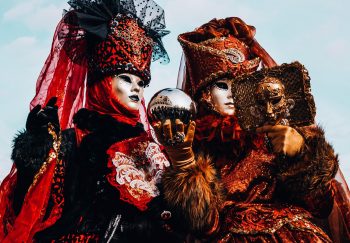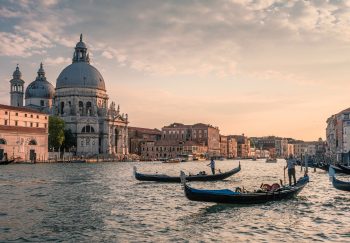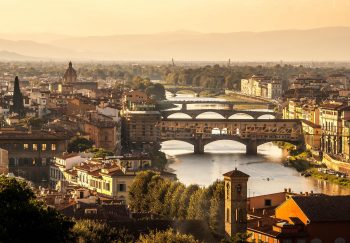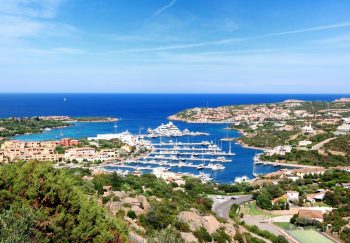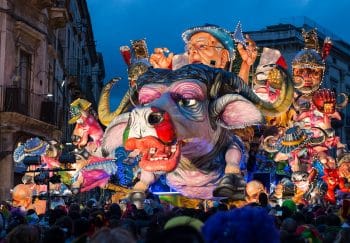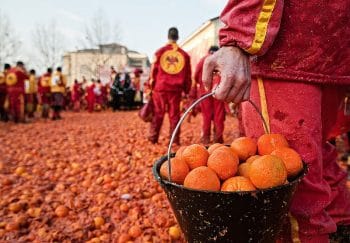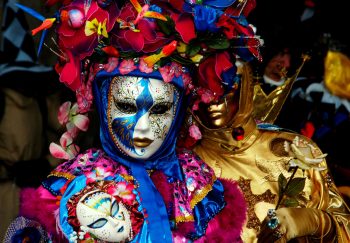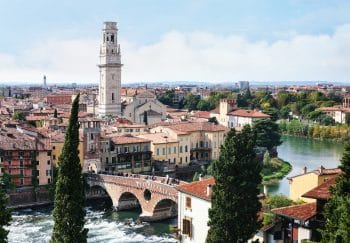After three days of navigation Charles V, the emperor of Holy Roman Empire, arrived in on 20 August 1535. This was the start of the journey that would take him to the innermost of Sicily. Around 15,000 people lived in Trapani, which was also known as The key to The kingdom. It was home to many people, businesses, and commercial and military trades. We can still hear the port’s full power and soul, as it is surrounded by docks. These cities take their profits from the sea. The Emperor stayed only a few days, so let’s see the Pepoli palace where our protagonist stayed and the Cathedral where privileges were confirmed to Trapani’s community and single individuals.
Charles V left Trapani and reached Alcamo. He spent two nights at the magnificent 14th-century castle before returning to Monreale. This small town of just 4,000 people is centered around the abbey, the Cathedral with its impressive golden mosaics, and impressive apses.
This was his preparation for his arrival in Palaermo. The triumphant entrance of the emperor into the city took place through the medieval Porta Nuova. It was decorated with garlands and writings to celebrate the king’s military victories. Let’s continue the walk. We will be backing Porta Nuova and then we will go ahead to Vittorio Emanuele Street (once called the Cassaro) to reach the cathedral. It is easy to imagine the yellow and red drapes that decorated the elegant residences. The procession began near the church Sant’Antonio abbot and continued towards the center of the city until it reached Piazza San Francesco. This was the culmination of this spectacular ceremony.
He was welcomed to the Spanish Ajutamicristo Palace. This building is one of the most luxurious buildings in the city. Many political engagements were held during the Palermitan era. Charles V was a Sicilian. He visited monuments, and wanted to learn. Being amused by the tradition of a seductive, cosmopolitan, and fun-loving city, he took part in rides, tournaments, and shows with the Steri Palace.
When he left the city one month later, The Festive Crowd Farewelled him from Porta Termini to Ponte dell’Ammiraglio.
According to tradition, before reaching Messina he took a bath at the Spa of . This spa is well-known for its therapeutic qualities. Let’s take a break since there’s a long walk ahead.
It was possible to reach Messina via di Messina at the seaside, or by the mountain. The presence of pirates along the coast made it necessary for the Emperor to traverse the mountains. However, the inconvenience of the walk was worth it as he visited inner areas of Madonie and Polizzi and ventured into Gangi and the Petralies, where he was warmly welcomed by the local people.
An imperial coat commemorating his visit to Gangi Vecchio ‘s convent is placed at the main entrance. Let’s take a moment to capture it and immortalize our visit.
Troina is a small, but prestigious city. History is mixed with tradition. It is said that three knights crossed a narrow, crowded street with flowers and a husk stuffed with nougat. The cubbaita was a small, sweet, honey-sweetened, almond-seame mixture. Let’s eat some and remember those special moments.
Charles V continued onwards to the small, but prestigious town Randazzo. He stopped first at the abbey in Maniace.
Let’s visit the Aragonese Royal Palace to see the walled windows. The emperor welcomed the crowd by saying “You all riders!”. This gesture was immortalized in a small fragment of time.
Charles V then set out for the small, prestigious town Randazzo. He stopped first at the abbey in Maniace.
Let’s visit the Aragonese Royal Palace to take a look at the walled windows. The touched emperor welcomed the crowd by pronouncing the sentence “You all knights!” Anyone else was allowed to sit from the window, immortalizing his act as a piece of eternity.
The imperial parade continued along the valley, near one of the little lakes, so-called gurne’. There, the emperor killed an a duck. This place is now known as the Gurna, the Emperor . Let’s get down to the beauty of this place and let’s cross it with the wonder only nature can offer.
Next stop: Taormina. It is hard to imagine the village today as it was back then, encircled by medieval walls. The village’s beauty, however, is as unmissable as ever. It was difficult to travel from Taormina, Italy, to Messina via the steep hillsides of Peloritani Mountain. We will cross it easier, having stopped at the monastery St. Placido Calonero (south-west of Messina) where the Emperor rested, likely exhausted by the long journey. The abbot of the monastery built a bust to commemorate his stay.
The final destination on our journey is , a rich Italian town. To welcome him, Polidoro da Caravaggio, and Francesco Maurolico, ordered three trionfal arches containing the symbols dear to him – the Concord and the Peace and Victory – as well as the trionfal Charriots that attended him at Cathedral.
This is the end of our journey with Charles V. He will be able to cross the strait and bring with him the joyful noises of the Sicilian people, an encouraging joy before the forthcoming battles.
